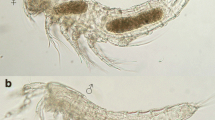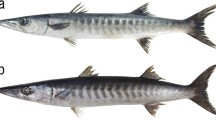Abstract
Scolecophidia (Squamata, Serpentes), commonly known as blindsnakes, wormsnakes or threadsnakes comprises a group of small snakes, with relatively few systematic and morphological studies when compared to Alethinophidia. Since the external morphology is very conserved amongst scolecophidians, internal morphological studies—such as the hemipenial morphology—are useful to unravel several systematic issues within the group. We aimed to describe the hemipenial morphology of Epictia vellardi (Epictinae, Leptotyphlopidae) based on 16 organs belonging to eight specimens. The organ is unilobed, with the body conspicuously narrower than the base and with the apex slightly expanded, without any macroscopic ornamentation. The comparison of the hemipenial morphology of E. vellardi with other hemipenes of Epictia spp. allowed us to identify two general morphological patterns for the genus, which are proposed and discussed in detail in the present study. The results found herein may be extremely relevant for future hemipenial descriptions. In addition, independent characters found in Types I and II (such as ornamentation, shape of base, body and apex) should be regarded for future systematic and evolutionary morphology studies within Leptotyphlopidae, in addition to assisting in the taxonomy and identification of species of the genus.


Similar content being viewed by others
References
Adalsteinsson SA, Branch WR, Trape S, Vitt LJ, Hedges SB (2009) Molecular phylogeny, classification, and biogeography of snakes of the family Leptotyphlopidae (Reptilia, Squamata). Zootaxa 2244:1–50
Arnold EN (1986) Why copulatory organs provide so many useful taxonomic characters: the origin and maintenance of hemipenial differences in lacertid lizards (Reptilia: Lacertidae). Zool J Linn Soci 29:263–281
Bailey JR, Carvalho AL (1946) A new Leptotyphlops from Mato Grosso, with notes on Leptotyphlopstenella Klauber. Boletim do Museu Nacional, Nova série, Zool 52:1–7
Branch WR (1986) Hemipenial morphology of African snakes: a taxonomic review. Part 1. Scolecophidia and Boidae. Journal of Herpetology 20:285–299
Broadley DG, Wallach V (2007a) A revision of the genus Leptotyphlops in northeastern Africa and southwestern Arabia (Serpentes: Leptotyphlopidae). Zootaxa 1(408):1–78
Broadley DG, Wallach V (2007b) A review of East and Central African species of LetheobiaCope, revived from the synonymy of Rhinotyphlops Fitzinger, with descriptions of five new species (Serpentes: Typhlopidae). Zootaxa 1(515):31–68
Cabral H, Netto F (2016) Epictia vellardi. Geogr Distrib Herpetol Rev 47(1):83
Cei JM (1993) Reptiles del noroeste, nordeste y este de la Argentina. Herpetofauna de las selvas subtropicales, Puna y Pampas. Museo Regionale di Scienze Naturali, Torino 14:1–94
Costa HC, Bérnils RS (2018) Répteis do Brasil e suas Unidades Federativas: lista de espécies. Herpetologia Brasileira 7:11–57
Dowling HG, Savage JM (1960) A guide to the snake hemipenis: a survey of basic structure and systematic characteristics. Zoologica 45:17–28
Eberhard WG (1985) Sexual selection and animal genitalia. Harvard University Press, Cambridge, UK
Eberhard WG (2009) Evolution of genitalia: theories, evidence, and new directions. Genetica 138:5–18
Fabrezi M, Marcus A, Scrocchi G (1985) Contribución al conocimiento de los Leptotyphlopidae de Argentina. I. Leptotyphlopsweyrauchi y Leptotyphlopsalbipuncta. Cuadernos de Herpetología 1:1–20
Francisco BCS, Pinto RR, Fernandes DS (2012) Taxonomy of Epictiamunoai (Orejas-Miranda, 1961) (Squamata: Serpentes: Leptotyphlopidae). Zootaxa 3512:42–52
Francisco BC, Pinto RP, Fernandes DS (2018) Taxonomic notes on the Genus SiagonodonPeters, 1881, with a report on morphological variation in Siagonodoncupinensis (Bailey and Carvalho, 1946) (Serpentes: Leptotyphlopidae). Copeia 106:321–328
Graboski R, Arredondo JC, Grazziotin FG, da Silva AAA, Prudente ALC, Rodrigues MT, Bonatto SL, Zaher H (2018) Molecular phylogeny and hemipenial diversity of South American species of Amerotyphlops (Typhlopidae, Scolecophidia). Zoolog Scr. https://doi.org/10.1111/zsc.12334
Koch C, Martins A, Schweiger S (2019) A century of waiting: description of a new EpictiaGray, 1845 (Serpentes: Leptotyphlopidae) based on specimens housed for more than 100 years in the collection of the Natural History Museum Vienna (NMW). PeerJ 7:e7411. https://doi.org/10.7717/peerj.7411
Laurent RF (1984) El genero Leptotyphlops en la coleccion de la Fundacion Miguel Lillo. Acta Zool Lilloana 38(1):29–34
Martins AR, Passos P, Pinto RR (2018) Unveiling diversity under the skin: comparative morphology study of the cephalic glands in threadsnakes (Serpentes: Leptotyphlopidae: Epictinae). Zoomorphology 137:433–443
Martins A, Koch C, Pinto R, Folly M, Fouquet A, Passos P (2019) From the inside out: discovery of a new genus of threadsnakes based on anatomical and molecular data, with discussion of the leptotyphlopid hemipenial morphology. J Zool Syst Evol Res 57:840–863
Martins A, Passos P, Pinto R (2019) Moving beyond the surface: Comparative head and neck myology of threadsnakes (Epictinae, Leptotyphlopidae, Serpentes), with comments on the ‘scolecophidian’ muscular system. PLoS ONE 14(7):e0219661. https://doi.org/10.1371/journal.pone.0219661
McCranie JR, Hedges SB (2016) Molecular phylogeny and taxonomy of the Epictiagoudotii Species complex (Serpentes: Leptotyphlopidae: Epictinae) in Middle America and northern South America. PeerJ 4:e1551. https://doi.org/10.7717/peerj.1551
Mezzasalma M, Andreone F, Glaw F, Petraccioli A, Odierna G, Guarino FM (2016) A karyological study of three typhlopid species with some inferences on chromosome evolution in blindsnakes (Scolecophidia). Zoologischer Anzeiger: A J Comp Zool 264:34–40
Miralles A, Marin J, Markus D, Herrel A, Hedges SB, Vidal N (2018) Molecular evidence for the parapyly of Scolecophidia and its evolutionary implications. J Evol Biol 31:1782–1793
Murphy JC, Rutherford MG, Jowers MJ (2016) The threadsnake tangle: lack of genetic divergence in Epictiatenella (Squamata, Leptotyphlopidae): evidence for introductions or recent rafting to the West Indies. Stud Neotrop Fauna Environ 51:197–205
Myers CW, Campbell JA (1981) A new genus and species of colubrid snake from Sierra Madre del Sul of Guerrero, Mexico. Am Museum Novit 2708:1–20
Myers CW, McDowell SB (2014) New taxa and cryptic species of Neotropical snakes (Xenodontinae), with commentary on hemipenes as generic and specific characters. Bullet Am Museum Nat Hist 385:1–112
Nagy ZT, Marion AB, Glaw F, Miralles A, Nopper J, Vences M, Hedges B (2015) Molecular systematics and undescribed diversity of Madagascan scolecophidian snakes (Squamata: Serpentes). Zootaxa 4040(1):031–047
Orejas-Miranda BR (1962) Descripcion del hemipenis de Leptotyphlopsmunoai Orejas-Miranda, 1961. Comunicaciones Zool del Museo de Hist Nat de Montevideo 7(97):1–9
Passos P, Martins A (2016) Pinto-Coelho D (2016) population morphological variation and natural history of Atractus potschi (Serpentes: Dipsadidae) in Northeastern Brazil. South Am J Herpetol 11(3):188–211
Passos P, Caramaschi U, Pinto R (2005) Rediscovery and redescription of Leptotyphlops salgueiroi Amaral, 1954 (Squamata, Serpentes, Leptotyphlopidae). Boletim do Museu Nacional 520:1–10
Passos P, Caramaschi U, Pinto RR (2006) Redescription of Leptotyphlops koppesi Amaral, 1954, and description of a new species of the Leptotyphlops dulcis group from Central Brazil (Serpentes: Leptotyphlopidae). Amphibia-Repitilia 27:347–357
Passos P, Prudente ALC, Ramos LO, Caicedo-Portilla JR, Lynch J (2018) Species delimitation in the Atractus collaris complex. Zootaxa 4392(3):491–520
Pesantes OS (1994) A method for preparing the hemipenis of preserved snakes. J Herpetol, Oxford: Soci Study Amphib Reptiles 28(1):93–95
Peters JA, Orejas-Miranda BR (1970) Notes on the hemipenis of several taxa in the family Leptotyphlopidae. Herpetologica 26(3):320–324
Pinto RR (2011) Curcio F (2011) On the generic identity of Siagonodon brasiliensis, with the description of a new leptotyphlopid from Central Brazil (Serpentes: Leptotyphlopidae). Copeia 1:53–63
Pinto RR (2012) Fernandes R (2012) A new blind snake species of the genus Tricheilostoma from Espinhaço Range, Brazil and taxonomic status of Rena dimidiata (Jan 1861) (Serpentes: Epictinae: Leptotyphlopidae). Copeia 1:37–48
Pinto RR, Passos P, Portilla JRC, Arredondo JC, Fernandes R (2010) Taxonomy of the threadsnakes of the tribe Epictini (Squamata: Serpentes: Leptotyphlopidae) in Colombia. Zootaxa 2724:1–28
Pyron RA, Wallach V (2014) Systematics of the blindsnakes (Serpentes: Scolecophidia: Typhlopoidea) based on molecular and morphological evidence. Zootaxa 3829: 001–081. Seymour, R. S. (1987). Scaling of cardiovascular physiology in snakes. Am Zool 27:97–109
Salazar-Valenzuela D, Martins A, Amador-Oyola L, Torres-Carvajal O (2015) A new species and country record of threadsnakes. Amphib Reptile Conserv 8(1(special section)):107–120(e89)
Savage JM (2002) The amphibians and reptiles of costa rica: a Herpetofauna between two continents, between two seas. The University of Chicago Press, Chicago, Illinois, United States
Scrocchi G (1990) Contribución al conocimiento de los Leptotyphlopidae de Argentina. II: Nuevos datos sobre Leptotyphlops australis Freiberg y Orejas-Miranda, 1968. Acta Zoológica Lilloana 39:113–114
Thomas R (1975) The hemipenis of Leptotyphlops tenella Klauber (Serpentes: Leptotyphlopidae) and a new distributional record. Journal of Herpetology 9:250–252
Uetz P, Freed P, Hošek J (2020) The Reptile Database. https://www.reptile-database.org. Accessed 2 June 2020
Wallach V (2016) Morphological review and taxonomic status of the Epictia phenops species group of Mesoamerica, with description of six new species and discussion of South American Epictia albifrons, E. goudotii, and E. tenella (Serpentes: Leptotyphlopidae: Epictinae). Mesoam Herpetol 3:215–374
Zaher H, Prudente ALC (2003) Hemipenes of Siphlophis (Serpentes, Xenodontinae) and techniques of hemipenial preparation in snakes: a response to Dowling. Herpetological Review 34(4):302–307
Acknowledgements
We are thankful to F. Curcio (UFMT) for allowing us to examine specimens and to Professor J.R.P. Pujol, from the Department of Zoology of the Instituto de Ciências Biológicas (UnB), for allowing us to use the Leica M205C stereomicroscope microscope available to photograph and analyze specimens. A.C. Ferreira thanks Programa de Iniciação Científica of the Universidade de Brasília (ProIC/UnB) and Fundação de Apoio à Pesquisa do Distrito Federal (FAPDF) for the scholarship granted for this project.
Funding
Ana Carolina Ferreira was supported by Fundação de Apoio à Pesquisa do Distrito Federal (00193.00002054/2018-91).
Author information
Authors and Affiliations
Contributions
ACF has contributed in the study conceptualization, data collection, formal analysis, methodology, project administration and manuscript writing. AM contributed in conceptualization, data collection, formal analysis, methodology, project administration, supervision and manuscript revision. JK contributed with conceptualization, methodology, project administration, supervision and manuscript revision.
Corresponding author
Ethics declarations
Conflict of interest
The authors declare that there are no conflicts of interest or competing interests.
Ethics approval
This study did not demand any ethics approval.
Consent to participate
This study did not demand any consent to participate.
Consent for publication (include appropriate statements)
All the authors agreed with the content and to submit this manuscript. We reinforced that we obtained consent from the responsible authorities at the institution where the work has been carried out.
Availability of data and material (data transparency)
All specimens analyzed herein are housed at the Coleção de Répteis at the UFMT.
Additional information
Publisher's Note
Springer Nature remains neutral with regard to jurisdictional claims in published maps and institutional affiliations.
Rights and permissions
About this article
Cite this article
Ferreira, A.C., Klaczko, J. & Martins, A. Hemipenial morphology of Epictia vellardi (Laurent, 1984) (Leptotyphlopidae, Serpentes) with the proposition and discussion of two general hemipenial patterns within the genus Epictia. Zoomorphology 140, 143–150 (2021). https://doi.org/10.1007/s00435-020-00506-0
Received:
Revised:
Accepted:
Published:
Issue Date:
DOI: https://doi.org/10.1007/s00435-020-00506-0




